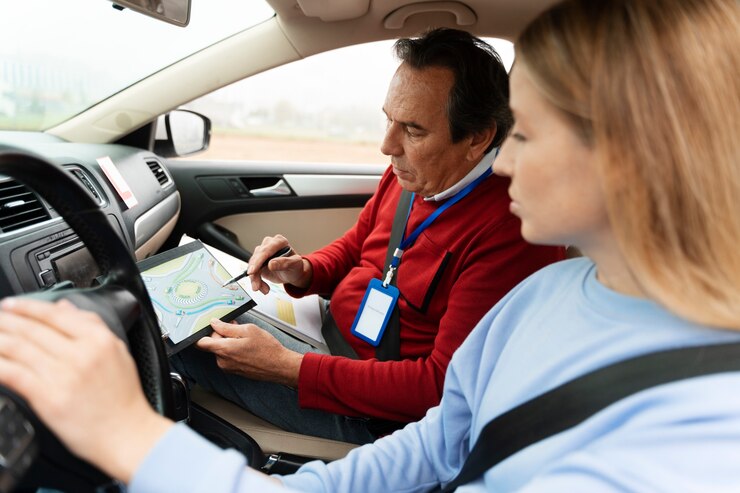Manual driving is more than just a skill; it’s an art form that connects you intimately with your vehicle. Imagine the rush of taking control, feeling each gear shift as you navigate through winding roads and bustling city streets. Whether you’re new to manual transmission or looking to refine your skills, mastering techniques like switching 2nd can elevate your driving experience.
Driving a manual car opens up a world of engagement that automatic vehicles often lack. You become one with the machine, understanding its rhythm and responding intuitively to its needs. But it’s not without challenges—many drivers struggle during their initial attempts at shifting gears smoothly.
This guide will delve into everything you need to know about enhancing your manual driving skills. From grasping the fundamentals of shifting gears to navigating unexpected situations on the road, we’ll equip you with tips and insights for becoming a proficient manual driver. Let’s hit the road together!
Understanding the Basics of Manual Transmission
Manual transmission, often referred to as stick shift, relies on a driver’s input for gear changes. Unlike automatic cars that do the work for you, manual vehicles require coordination between clutch and gear lever.
At the heart of this system is the clutch pedal. Pressing it disengages the engine from the wheels, allowing smooth shifting without grinding gears.
Each vehicle has its own arrangement of gears—from first to fifth or sixth—and reverse. Understanding this layout helps in mastering your shifts.
Learning when to shift is crucial; typically, you’ll change gears based on speed and engine RPM (revolutions per minute). The goal is to keep the engine running efficiently while matching your speed with optimal power delivery.
While driving a manual may seem daunting at first, grasping these basics sets a strong foundation for more advanced techniques.
Advantages of Driving a Manual Vehicle
Driving a manual vehicle offers a unique experience that many enthusiasts cherish. One significant advantage is the enhanced control over the car’s performance. Manual transmissions allow drivers to select gears based on their needs, optimizing power and fuel efficiency.
Another benefit is the connection with the vehicle. Shifting gears manually creates an engaging driving experience, making you feel more in tune with your surroundings. This engagement often leads to improved vehicle awareness.
Moreover, mastering a manual transmission can be beneficial in various situations. It enables better handling of inclines and declines while providing precision in gear selection during challenging road conditions.
Additionally, owning a manual car can lead to savings on maintenance costs. Generally, they have fewer components than automatics and may require less frequent repairs or replacements. The thrill of driving sticks also appeals to those who desire an exciting ride every time they hit the road!
Common Mistakes Made by New Manual Drivers
Many new manual drivers make common mistakes that can hinder their learning experience. One frequent error is engaging the clutch too quickly. This often leads to stalling, causing frustration and anxiety behind the wheel.
Another mistake involves improper gear selection. New drivers might shift into higher gears too soon or stay in lower gears longer than necessary. This not only affects engine performance but also fuel efficiency.
Nervousness can lead to excessive revving of the engine when starting from a stop. It’s important to find that sweet balance between throttle and clutch engagement without overdoing it.
Additionally, some may forget to use mirrors frequently while driving, which is crucial for safe maneuvering on roads. Remembering these simple tips can significantly enhance your driving confidence as you master switching 2nd gear and beyond!
Tips for Improving Your Shifting Technique
Mastering your shifting technique can transform your driving experience. For better control, always listen to the engine’s sound. A high-revving engine signals it’s time to shift up.
Practice smooth clutch engagement. Press the clutch fully down before you change gears; then release it gradually. This prevents jerky movements that could throw off your balance.
Timing is crucial when switching from first to second gear. As you accelerate, ease off the accelerator slightly as you approach the right RPM for a seamless transition.
Use visual cues too. Watching the tachometer helps in recognizing optimal shifting points without relying solely on sound.
Stay relaxed and avoid rushing through shifts. Tension can lead to mistakes that disrupt smooth gear changes and affect overall performance while driving a manual vehicle.
Practicing on Different Terrains and Scenarios
Practicing on different terrains can significantly enhance your manual driving skills. Each terrain presents unique challenges that help you adapt to various conditions.
Start in a flat, open area where you can focus solely on mastering the clutch and gear transitions. Once you’re comfortable, venture into hilly regions. Here, you’ll learn how to manage inclines without stalling or rolling back.
Next, try driving through winding roads. This will sharpen your ability to shift smoothly while navigating curves. Pay attention to how speed affects shifting; it’s crucial for maintaining control.
Don’t forget about urban environments either! City driving involves frequent stops and starts, which tests your quick reflexes during gear changes.
Practice in adverse weather conditions like rain or snow when possible. These scenarios teach you how traction varies and the importance of controlling power through careful shifting techniques.
Dealing with Unexpected Situations while Driving a Manual Car
Driving a manual car can be thrilling, but it also comes with its share of surprises. Sudden obstacles or changes in traffic flow can catch you off guard.
When faced with an unexpected situation, stay calm. Take a deep breath and assess your surroundings quickly. Your focus should be on safety first.
If you need to brake suddenly, ensure you’re in the correct gear. Downshifting smoothly helps maintain control while slowing down without stalling the engine.
Remember that hill starts may present challenges when facing sudden stops or starts. Engage the handbrake to prevent rolling backward before gathering speed again.
Anticipate potential hazards by keeping an eye on other drivers’ behavior. This allows you to react preemptively rather than defensively.
Trust your instincts and practice will enhance your ability to handle these moments confidently, making each drive more enjoyable as your skills improve over time.
Advanced Techniques for Experienced Manual Drivers
For experienced manual drivers, mastering advanced techniques can elevate your driving to the next level. One such technique is double-clutching. This method involves pressing the clutch twice during gear shifts. It synchronizes engine speed with transmission speed, ensuring smoother transitions.
Another valuable skill is heel-toe downshifting. This technique allows you to brake and rev-match simultaneously while downshifting. It’s especially useful in racing or spirited driving situations, helping maintain stability and control as you enter corners.
Additionally, exploring engine braking can enhance your driving experience. By shifting into a lower gear without using the brakes, you harness engine resistance to slow down effectively while preserving brake life.
Practicing shifting at varying RPMs helps cultivate a better feel for your vehicle’s power band. Understanding when to shift based on performance will make every drive more enjoyable and efficient.
Conclusion
Switching 2nd gear in a manual vehicle is more than just a technical skill; it’s an art that enhances your driving experience. Mastering this technique opens up new possibilities on the road, allowing you to take control of your vehicle and respond effectively in various situations.
Understanding the nuances of manual transmission empowers drivers to appreciate the relationship between engine power and speed. The advantages of driving a manual car are numerous: better fuel efficiency, lower maintenance costs, and improved overall engagement with your ride.
As you progress from common mistakes to advanced techniques, each step builds upon your growing confidence behind the wheel. Practicing in diverse terrains not only hones your shifting skills but also prepares you for unexpected challenges. Embracing these experiences will elevate your proficiency as a manual driver.
Whether you’re new to driving or looking to refine existing skills, remember that practice makes perfect. Enjoy every shift as you navigate through gears seamlessly—especially when switching 2nd becomes second nature!

